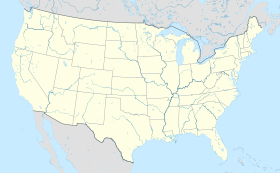Whaleback Shell Midden
|
Damariscotta Oyster Shell Heaps
|
|

Entrance to state historic site
|
|
| Location | Damariscotta, Maine |
|---|---|
| Coordinates | 44°02′31″N 69°30′47″W / 44.04194°N 69.51306°WCoordinates: 44°02′31″N 69°30′47″W / 44.04194°N 69.51306°W |
| Area | 11 acres (4.5 ha) |
| Part of | Damariscotta Shell Midden Historic District (#98001238) |
| NRHP Reference # | 69000027 |
| Significant dates | |
| Added to NRHP | December 30, 1969 |
| Designated CP | October 8, 1998 |
Whaleback Shell Midden is a shell midden, or dump, consisting primarily of oyster shells located on the east side of the Damariscotta River in Maine, United States. It is preserved as a Maine state historic site and was included as part of the Damariscotta Oyster Shell Heaps listed on the National Register of Historic Places in 1969. Other shell middens are located on the estuary in both Damariscotta and Newcastle. The middens in this area were formed over about 1,000 years between 200 BC to AD 1000.
The midden originally had three main layers of shells. In the bottom two layers, individual shells were generally 5–8 inches (10–20 cm) long. These two layers are separated by a layer of soil, and the middle layer is mixed with animal bones. The top layer contains smaller shells. Artifacts unearthed lead scientists to believe that successive tribes of prehistoric people used the area. The top layer was deposited by members of the Abenaki tribes that fished in the area in the summer.
Originally, the Whaleback midden was more than thirty feet deep, more than 1,650 feet in length, and a width varying from 1,320 to 1,650 feet. It got its name from its shape. Only a small portion of this midden remains today as much of it was processed into chicken feed from 1886 to 1891 by the Massachusetts-based Damariscotta Shell and Fertilizer company. Because of this, the Glidden midden, located across the river in Newcastle, is now the largest in Maine and the largest on the U.S. east coast north of Georgia.
The area around the remains of the Whaleback is a Maine state historic site, first opened for a full season in 2005, with some historical displays and a hiking trail.
By 1875 oysters that were once abundant were no longer native to New England waters. Wild populations have been established in recent years by the spawn of aquaculture oysters.
...
Wikipedia


